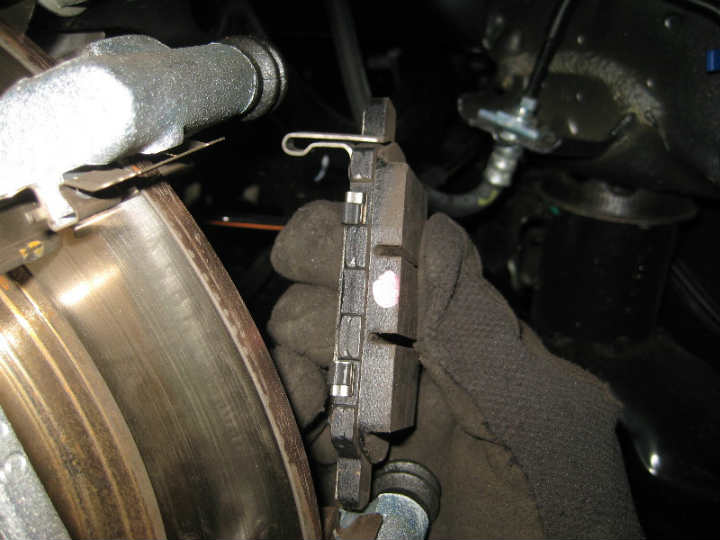Your Nissan’s braking system is one of the important safety features that it has. The braking system is comprised of a few different components that make sure your Nissan slows down or comes to a halt when you want it to. Most of these parts wear down over time, but none of them does so more than the brake pads.
The brake pads are made up of friction material that comes in contact with the brake rotors when you press the stop pedal. And even though they’re pretty straightforward parts, there’s a wide range of Nissan rear and Nissan front brake pads to choose from that can be made from a combination of materials or one specific material. Most vehicles feature two brake pads on both sides of the rotor, but there are some high-end vehicles that have more than two.
Brake Pad Structure
It’s always good to know how your car is built. The structure of the brake pads is as important as understanding the parts that make up the suspension system. Brake pads are made up of a few “components”, including a shim, backing plate, adhesive layer, abutment ear, underlayer, friction block, slot and chamfer.

The shim is the part located between the backing plate and caliper piston, and it acts as a noise and heat insulator. It prevents the pad vibrations from reaching the calipers and it keeps the brake pad’s temperature consistent. Shims can either be made of metal, rubber, and they can be single or double-layered.
The backing plate is typically made of steel and its job is to make sure the pad stays in place. It goes over the full length of the pad, and it also helps disperse some of the vibration and heat that are a result of braking.
The friction block is the part that comes in contact with the brake discs. These parts are what produces the friction and make your Nissan stop. Friction blocks are comprised of materials such as fibres, powders, lubricants, abrasives and resin.
The adhesive layer of the pad joins the backing plate and the friction block. The adhesive layer needs to be strong enough to be reliable in extreme temperature conditions.
The abutment ear attaches to the caliper bracket or the steering knuckle. Its job is to secure the brake pad and prevent it from moving during braking.
The underlayer is below the main friction block and its the part that comes in direct contact with the rotor. Although this layer also has some frictional material, it doesn’t provide as much as stopping power as the main layer. Some brake pads are equipped with sensors that produce noise to let you know the main layer has worn out.
Lastly, the chamfer is the bevelled or angle end part of the friction block. This part serves a few different purposes, such as dampening the noise, properly bedding the pads and allowing the backing plate some flex.
Types of Friction Material
As aforementioned, there are quite a few different types of Nissan rear and Nissan front brake pads. The parts are classified based on the material, or combination of materials used to make them. The ideal type of brake pad for your Nissan will depend on the application, the conditions you drive it in, and of course, the price of the brake pads. Obviously, different materials have different characteristics. Some wear faster, some perform better and some are more affordable than others.

Organic Brake Pads
Organic brake pads have their friction block made up of mostly organic materials such as plant fibers, glass, rubber, resin and sometimes kevlar. They’re usually found on most stock vehicles, as they’re quiet and soft. The downside to organic brake pads is that they produce a lot of brake dust, and they wear much faster than other types.
Semi-Metallic Brake Pads
Semi-metallic brake pads are made from a mix of organic materials and metals like steel or copper. They produce more braking power than organic brake pads due to the added metals. Furthermore, they’re better at dispersing heat, and are suitable for medium and heavy-duty applications. On the downside, they produce a lot of noise and brake dust, which is also a result of having metals. Sometimes, Kevlar is added to the mix to improve the performance.
Ceramic Brake Pads
Ceramic brake pads, as their name implies, are made of ceramic and small amounts of copper fibres. They provide the most advantages, such as quiet operation, less brake dust production and are capable of handling the most heat. They wear out the slowest, making them the most durable choice. Additionally, they recover faster and provide fade-free braking. On the downside, they’re the most expensive type, and don’t perform as well in colder environments.
Sintered Brake Pads
These brake pads are manufactured by fusing metal particles under extreme heat, creating hard-wearing and high-friction brake pads. They maintain consistent friction capability in extreme cold and heat. Furthermore, they don’t require any warming up, and they provide a firmer feel at the braking pedal. On the downside, they wear the brake rotors much faster than other types.